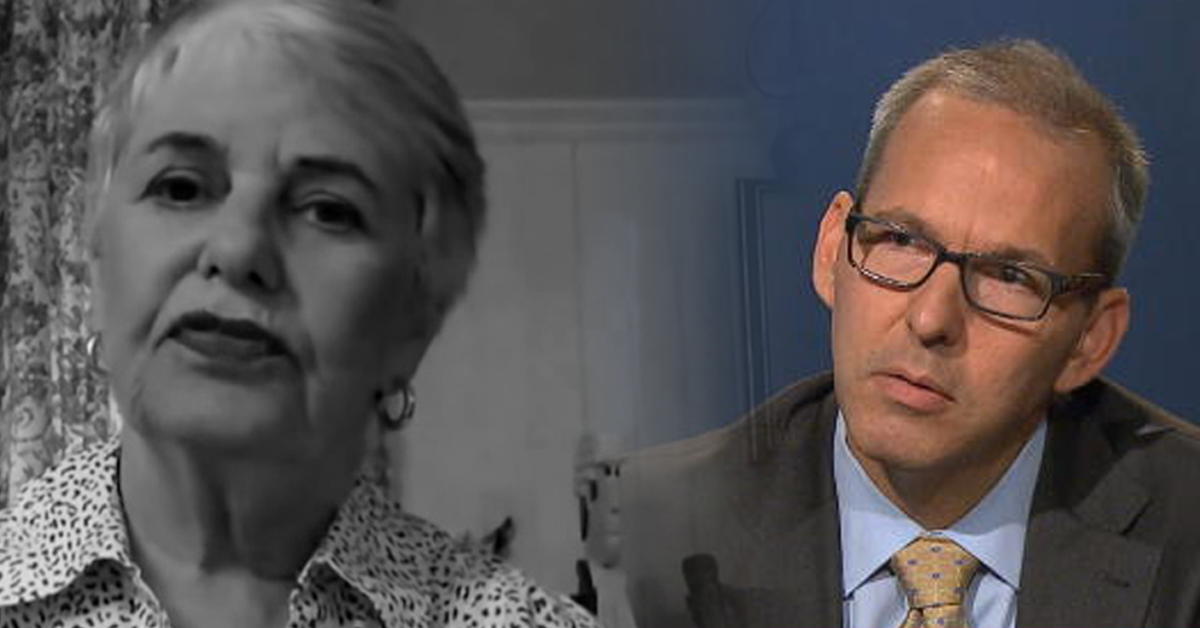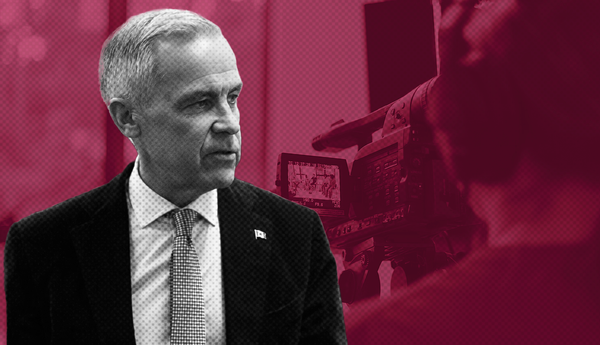In recent weeks, an industry-wide conversation in Canadian media has broken out on racism journalists face in their newsrooms. Some of this discussion has also focused on how a lack of Black, Indigenous and racialized journalists in the industry has resulted in poor coverage, amounting to the media’s failure to serve a significant chunk of its population.
The Canadian Association of Black Journalists and the Canadian Journalists of Colour have jointly released seven calls to action to address these issues, including for newsrooms to “take a targeted approach to recruitment, focused on hiring talent from racialized communities.”
This call is particularly important for opinion columnists, as they’re in a privileged position to help shape national conversations but are overwhelmingly white. Yet because there’s generally less budget to expand the workforce, the most likely way to diversify columnists is by replacing current ones.
I’ve been advocating this for years, and a common retort I’ve heard is that the most talented people are hired, so nothing needs to change. As I wrote in 2016, “The idea put forth is that people are hired solely on their merit, with no consideration of demographic factors. As such, this argument implies the homogeneity of Canadian columnists is due to the existence of a well-functioning meritocracy, and that the lack of non-white male columnists is because of a lack of talent.”
So, this begs the question: Is every one of the current crop of columnists more talented than the countless people who could replace them? This is ultimately subjective, but one way to assess it is by looking at the qualifications and experience columnists that have been around for decades had when they were hired. I’m going to focus on two long-time columnists I believe show that talent doesn’t always triumph in journalism.
It was billed as a matchup that could captivate a whole community, of all generations. A multi-part battle that ended up stretching over a two-year span. It wasn’t Muhammad Ali vs. Sonny Liston. It wasn’t even Logan Paul vs KSI. It was Jonathan vs. Barbara Kay, in a three–part debate series from April 2016 to July 2017 in the now-defunct Canadian Jewish News (CJN).
As a non-Jew, I’ve long wondered how CJN decided the Kays were the ones Jewish people in Canada wanted to hear from with so many other options. But the more important question is how did Jon and Barbara become fixtures of corporate Canadian media in the first place? How did we get stuck with them?
The story starts in the mid-90s when Jon, who has a bachelor and master’s degree in engineering from McGill and a law degree from Yale, was working at a New York law firm. Jon writes, “It was a great job for someone who liked being a lawyer. But what I really wanted out of life was to be a writer.” This isn’t surprising, as Jon’s perceived writing abilities were validated in his early teens when he won an annual writing contest at the Jewish Public Library. (Barbara helped launch the contest and encouraged him to compete.)
Jon has compared his journalism origin story to how Henry Lee Jackson became a member of the Sugarhill Gang, writing, “[Jackson] was talented and passionate about his craft, but he toiled in obscurity until he got one massive, lucky break.” (I’ll leave it up to you to decide if that’s a fair comparison.)
Jon notes that during this period he wrote essays and opinion pieces that were constantly being rejected. But then he had luck with a piece about Jewish and Black stereotypes as epitomized in the film Independence Day, which contains the claim that, “In postwar America, individual intelligence has been the dominant factor dictating what people earn and how successful they can be.” (Again, with Jon in mind, I’ll let you decide if that’s fair.)
Jon says the first draft was “somewhat crappy,” but that the final version, which he presumably thinks is better, was “rewritten in large part” by Barbara (his mom) and now Globe and Mail editorial page editor Tony Keller. This piece was impressive enough to Ken Whyte, then the editor at Saturday Night Magazine, who published it in November 1996.
Whyte became the National Post’s founding editor shortly after, and invited Kay to a job interview where he asked him about his “journalistic ambitions” and to comment on that day’s news. And that was it — that was all it took for Jon to leave law behind to become a National Post editorial board member.
I scanned the Canadian Newsstream database to look for pre-National Post era work by Jon, and the only thing I could find was a September 1997 Montreal Gazette article about moving from Montreal to New York. That doesn’t mean it’s the only one that exists, as these databases can be difficult to navigate and don’t include all publications. But recounting how he was hired, in both his own writing and a Ryerson Review of Journalism profile, Jon doesn’t mention any other work, so, presumably, that’s what got him the job.
Late last year in an interview with Jon on his podcast, Barbara spoke of Jon’s quick ascent to the National Post, telling him, “I was utterly amazed that somebody could go from being a lawyer to an editorial board member just like that. I didn’t understand. Becoming a journalist, I thought, ‘Wow, well you know, that’s a process. You go to journalism school, or you have to be an apprentice or you have to be a reporter first.’ … I have to say that when you got your job, and I was thrilled for you of course, I was also shocked. But I said to myself, ‘But I can write as well as Jon!’”
Jon replied, “So listeners can get this straight, your attitude was, ‘If Jon can do this, any bozo can do it?’”
In 2014, Jon admitted that, “If the 30-year-old version of Jon Kay applied for a job at the 2014-era National Post, I wouldn’t be hired.”
Now, onto Barbara.
I could spend multiple paragraphs listing off the parent-child, spouse-spouse, uncle/aunt-niece/nephew and other family relationships in the industry. The beneficiaries of this nepotism have had an easier time breaking into the industry than outsiders like me. That’s a trade off I’m willing to accept, as sharing an industry with a parent would be tough. For example, if I were Jon on the morning of June 1, 2001, and opened the National Post to read the following written by Barbara, I’d be a little embarrassed: “As parents with boundary-testing teenagers know — my son, for example, once set a wooden balcony afire with an improperly stubbed forbidden cigarette — there’s more than a fine line between adolescent acting out and the first downward step to moral depravity.”
The Kays, however, are sensitive about perceived nepotism, which seems to be due to a common, but factually incorrect, allegation that Jon hired Barbara as a National Post columnist. So, let’s be clear: Barbara was hired as a weekly columnist in 2003 when Natasha Hassan, now an opinion editor at the Globe and Mail, was the section’s editor. Jon became the editor later on. Jon didn’t hire Barbara.
It’s reasonable to wonder if Jon played any role in the hiring process, but apparently he didn’t even know Barbara was going to be hired before it happened. This version of history is confusing, however, as if nepotism played no role, it’s difficult to understand why Barbara was hired.
Barbara, who has a B.A and M.A. in English from the University of Toronto and McGill respectively, worked teaching literature in CEGEPs and at Concordia from 1966 until 1990. According to her website and author bios, Barbara’s journalism experience throughout this period was limited to book reviews and editing a high school anthology. Her bio also notes that “from the late 1990s and early 2000s, Barbara was a board member of the magazine Cité libre and a frequent contributor to its pages” Barbara has said she only became “politicized” in the 1990s.
In December 1998, Barbara wrote her first National Post opinion article. As to how it came about, Barbara told Jon on his podcast, “I kept pestering you. I said, ‘Jonny, you have to write about [the need for a federal party representing Montreal], you have to write about that.’ And finally, you said, ‘Look, if you think this stuff is so important, why don’t you write an op-ed, and I’ll pitch it to my editor.’” Over the next four years before being hired, Barbara would have at least 15 other opinion articles published at the National Post, as well as at least seven letters to the editor, three book reviews, a news feature and a debate speech.
Apparently, this limited supply of National Post writing, and whatever existed outside of it, was enough to win Barbara a weekly columnist spot. So, let’s look at some of that pre-columnist National Post work, which I found through a database but is also partly accessible on Barbara’s website.
On May 11, 2000, the National Post published a piece titled, “The burden of the aboriginal: If natives leave the reserves, they must feel complicit in their own ‘cleansing.’” In it, Barbara writes:
“There can be no diaspora for native peoples. All aboriginal cultures, in Canada and elsewhere, share a spiritual commitment to The Land that is not only fixed in a preliterate template, but resists in the name of authenticity all attempts to impose upon it the ‘white man’s tools’: In native culture, intuitive, pantheistic knowledge trumps book knowledge; wilderness will always be privileged over cities, crafts from natural materials over commerce, collectivism over individualism and modern democracy. This is not to say that native people do not and can not learn white practices. It is just that in doing so they are axiomatically in partial flight from their own culture. In fact, ‘civilized’ achievements by successful natives can send them scrambling back to the trapping lines or the whale hunt to recover from their feelings of alienation.”
On May 12, 2001, the National Post published a piece titled, “‘Dream on, Narcissistic Singletons’: Bridget Jones is a tramp.” I’ll let that one speak for itself.
On Feb. 26, 2003, National Post published Barbara’s part of a Leacock Debate on the motion: “A woman’s proper place is in the kitchen.” Barbara argued on the affirmative side, saying, “It saddens me that women today feel ashamed to admit their yearning to be at-home wives and mothers. I blame the feminists, of course. Oh sure, they got us the vote and comfortable jogging bras. But you can thank the feminists for those abandoned kitchens leading to the rise of fast food empires and the scourge of soaring obesity rates, amongst other social ills, not to mention the myth that a woman’s needs and goals are the same as a man’s.”
Barbara then sets up an analogy where Canada is the woman and Britain the man in a relationship, saying, “Canada was the go-between, the honest broker between Great Britain and the United States, the hostess passing around the party sandwiches, making sure the drinks were topped up, providing that lovely comfortable ambiance only a devoted homemaker can achieve. We felt important, empowered as good women can when they facilitate important work between dominant men.”
Upon the ‘breakup,’ Barbara writes, “We were single for a while, and we didn’t much like it, because let’s face it, our nature is womanly, we felt vulnerable, and deep in our hearts knew we weren’t made for the responsibilities that come with real autonomy.” She then shifts into an analogy where Canada and the U.S. enter a relationship as a woman and man named Candy and Tex, and I’ll spare you more details because you’ve suffered enough.
On July 7, 2003, National Post published a piece titled, “We Built An Alter, Will They Come?” about gay marriage, two years before it was legalized. In it, Barbara wrote:
“The gay-marriage-rights issue has been fabricated out of whole cloth by social revolutionaries who have run out of traditional social institutions to mow down. The fact is: The overwhelming majority of heterosexuals want to marry because in doing so they are joining a historical stream and are reinforcing links to the generation that came before as well as affirming the one to follow. The overwhelming majority of gay men do not want to marry because, by biological definition, they are not in the historical stream. Unlike heterosexuals, every generation of homosexuals must re- invent itself. This is why the spectacle of a gay marriage ceremony will never have the solemn impact or underlying meaning of a real marriage.”
Later that month, shortly before Barbara seems to have been hired, the National Post published a piece titled, “So there’s this Italian, this German and …”
In it, Barbara writes that “stereotyping can be a benign and useful tool in coping with the restless swirl of cultural diversity that surrounds us. … Stereotyping is the marijuana of ethnic relations, not the heroin of hatred, but after so many years of indoctrination by the multicultural Thought Patrol, we have a tendency to feel guilty when we call lighthearted attention to obvious differences between us.”
She then goes on to talk about her experience teaching:
“In the ’80s I taught English as a second language to new Canadians. My classes were a mix of Asian, Middle Eastern and European students, and with experience I couldn’t help making certain cultural assumptions. It was predictable, for example, that the Asian students would ace the written tests, but they resisted conversation; they were too shy and deferential to authority to engage in meaningful dialogues. The Greek men, by contrast, were gregarious, confident and happy to talk your ear off, but their grasp of syntax was rudimentary in the extreme.
Barbara adds that she’d often read an advice column in class to stimulate conversation. In one of these columns, a wife said her husband’s friend had made a sexual advance on her, and asked what to do. Barbara recounted how the students reacted, and said, “I cannot reveal the national origins of the various students, because I would be accused of cultural stereotyping, but I can imagine what certain comedians would do with this material.”
So, there you have it: This is the sort of work that formed the basis upon which Barbara was hired as a columnist. Speaking about that process on his podcast, Jon asked Barbara, “When you meet people, and they’ve been reading your columns for 15 years or something like that, do they ever express surprise that you started your career as an opinion writer in such an abrupt fashion?”
With these histories in mind, it’s worth looking at what a recently newly hired columnist did before getting her position. Tanya Talaga, an Ojibwe woman, started writing at the Toronto Star in the late 90s, working for the publication until recently. She has written two books, the first of which won multiple prizes and was a national bestseller. She has also been nominated five times for the Michener Award in public service journalism. It was only last month that she announced she will be a columnist at the Globe and Mail.
Of course, Talaga may have been offered a spot before, or not had any interest until now, but the fact remains that there’s a tellingly wide gap between her and the Kays’ pre-columnist qualifications.
Since being hired, Jon and Barbara have accomplished quite a bit.
Barbara has been a National Post columnist for 17 years. She has received awards, including the noteworthy “Le prix Jean-Charles Harvey, given by the men’s rights group ‘L’Après-Rupture’” and the “Award for Promoting Gender Issues in the Media, given by The National Coalition of Men,” both in 2009. Barbara has also written a few books, including a National Post e-book The Best of Barbara Kay, Vol. I (the second volume never came out), and Acknowledgements: A Cultural Memoir and Other Essays, which you can pickup for $1. Barbara also was a regular contributor to CBC’s “Because News” radio show from September 2016 to May 2017, when she says she was let go for her “politically incorrect views on indigenous cultural appropriation.”
Jon started writing frequently for the National Post in 2002, was given a column and then became the opinion editor in 2005. He moved to The Walrus in December 2014 as the editor-in-chief, remaining in the position until May 2017 when he resigned after the “Appropriation Prize” controversy forced him to a realization, as he told the National Post, that, “In recent months especially, I have been censoring myself more and more, and my colleagues have sometimes been rightly upset by disruptions caused by my media appearances. Something had to give, and I decided to make the first move.” Jon became a senior editor at Quillette in July 2018 — a perfect fit — and started writing frequently for the National Post again in late-2019, though he says he isn’t employed there. Jon has written or edited multiple books, worked as an editorial assistant on several others — including Justin Trudeau’s 2014 memoir — and has won two National Newspaper Awards and a National Magazine Award.
Jon also has an incredible knack for identifying important topics he admits knowing little about, taking what he considers to be a crash course and then spending years writing on them. Kay writes, “If anyone had told me, when I’d joined the National Post in 1998, that within three years I’d be devoting my writing career to the fight against Islamist terrorism, I would’ve asked them what ‘Islamist’ meant. (My last Post column before 9/11, to provide some context, was about the awesomeness of Family Guy.)” As for the learning Jon underwent that made him feel qualified: “I read the Koran, hoping to gain insights into Osama Bin Laden’s mindset, travelled to conferences in Israel, joined a Washington, D.C.-based think tank devoted to protecting democratic countries from terrorism.”
Now, Jon writes about, tweets on or discusses issues related to trans people. He has written hundreds of articles for the National Post, but I couldn’t find one on trans issues before 2017. Since then, he has written on the topic at Quillette and the National Post, has appeared on at least two debates or panels on gender identity, and has dedicated some episodes of the podcast he co-hosted — which he says he and his co-host hope “made this world a little safer for wrong speakers everywhere” — to these issues. Jon has also said he is “entranced” by Meghan Murphy.
You can take this career trajectory as proof that bringing the Kays into the journalism world, even with little past experience, was a smart choice. Or you can take it as a sign that the right sort of journalists in Canada fail upward. Regardless, the more relevant question at this point is what do either of the Kays add of value to the corporate Canadian media landscape?
Responding to a Goodreads question asking the best thing about being a writer, Barbara replied in part, “There is no retirement age. That works for me. I am pretty old!” Barbara will have turned 78 by the end of this year. The average retirement age in Canada is 64. Just because Barbara can keep pumping out columns — and I’m certainly not implying she can’t, as unfortunately the quality of her writing has remained largely the same — doesn’t mean she should. At some point, you have to humbly bow out. Sure, editors may say she still brings in clicks. But the 2017 film Transformers: The Last Knight (Rotten Tomatoes score: 15 per cent) also had a box office of more than $600 million US, and yet it would be a mistake to screen it in theatres nationally, every week, for 16 years after its debut, pushing out new movies worth seeing.
Jon, meanwhile, has pivoted to becoming an ostensibly renegade anti-establishment journalist. He once had “IDW” in his Twitter bio despite not being mentioned in the infamous piece that spawned the “Intellectual Dark Web” moniker, which discussed people such as Sam Harris, Dave Rubin, Ben Shaprio and Maajid Nawaz. Last year, the National Post managed to get prominent IDW member Jordan Peterson working on a “secret project” with them, and writing occasionally. But in the summer of 2019, according to The New Republic, Peterson “suffered agonizing withdrawal symptoms when he tried to quit [clonazepam] cold turkey,” and in September of that year “his family announced that he had undergone a stint in rehab in upstate New York.” Jon started writing for the National Post on a frequent basis again the same month. We don’t need a bargain bin Peterson in the Canadian media landscape.
Ultimately, it was much easier for people to become journalists, and for journalists to become columnists, in the past, with white people having it easier than others at any point. Research has found columnists tend to hold their positions for an average of nine years, with many working for decades. As a result, we’ve been haunted by poor editorial decisions. A combined 30-years of being National Post columnists is more than enough for the Kays.
I want to make it clear that I’m not trying to “cancel” the Kays or get them fired. It’s obvious editors are OK with letting columnists hold their positions until they die anyways, regardless of quality — unless they’re writing about Black liberation, of course. Instead, I’m humbly asking the Kays to step aside, and make room for voices more worth reading. The next Kay vs. Kay extravaganza should be held at Quillette.
CORRECTION: This article has been updated to note that Jon has a bachelor and master’s degree in engineering, not a B.A. and M.A. in engineering. Passage regrets this error.







